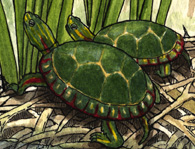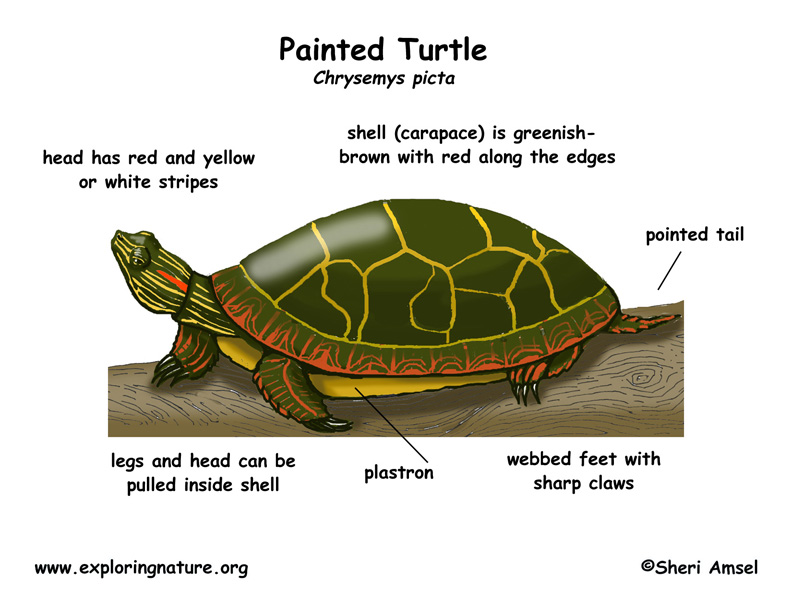

They are found across Canada from B.C. to Nova Scotia and south all over the eastern and northwestern U.S. and in a few spotty places in the southwest.
They live in ponds, lakes, and wetlands of all sizes.
They are 4 – 10 inches long with a greenish-black shell (carapace) that has yellow or red edges. They have red and yellow stripes on their neck, legs, and tail.
They like places with fallen trees or rocks in the water so they can come out of the water and sun themselves which keeps their bodies warm. Warming their bodies helps them stay healthy.
They eat water plants mostly, but also take small fish, frogs and water insects. They eat more meat as babies and as they age become more plant eaters.
As adults, they can be killed by raccoons, snapping turtles, and other predators.
Females lay 3 - 14 eggs in a nest she digs in the sand. Eggs hatch in about 9 – 11 weeks.
Kingdom: Animalia
Phylum: Chordata
Subphylum: Vertebrata
Class: Reptilia
Order: Testudines
Family: Emydidae
Genus: Chrysemys
Species: C. picta
When you research information you must cite the reference. Citing for websites is different from citing from books, magazines and periodicals. The style of citing shown here is from the MLA Style Citations (Modern Language Association).
When citing a WEBSITE the general format is as follows.
Author Last Name, First Name(s). "Title: Subtitle of Part of Web Page, if appropriate." Title: Subtitle: Section of Page if appropriate. Sponsoring/Publishing Agency, If Given. Additional significant descriptive information. Date of Electronic Publication or other Date, such as Last Updated. Day Month Year of access < URL >.
Amsel, Sheri. "Turtle (Painted)" Exploring Nature Educational Resource ©2005-2024. December 17, 2024
< http://exploringnature.org/db/view/523 >


